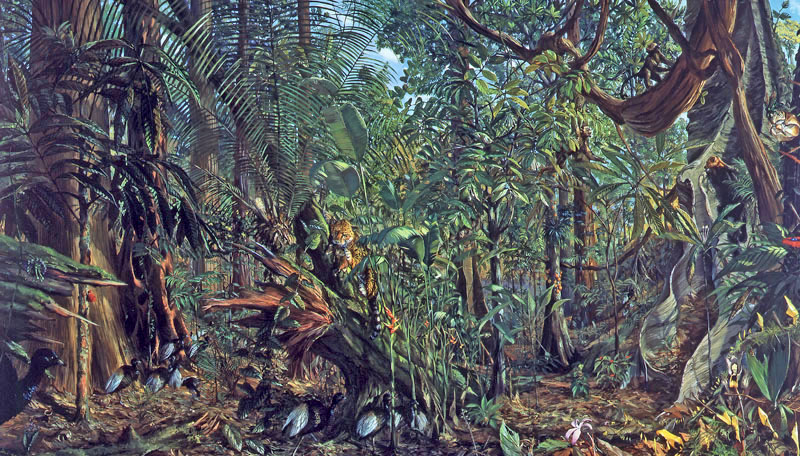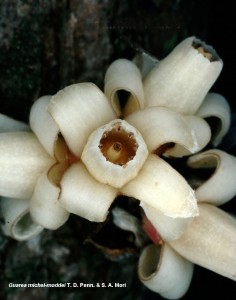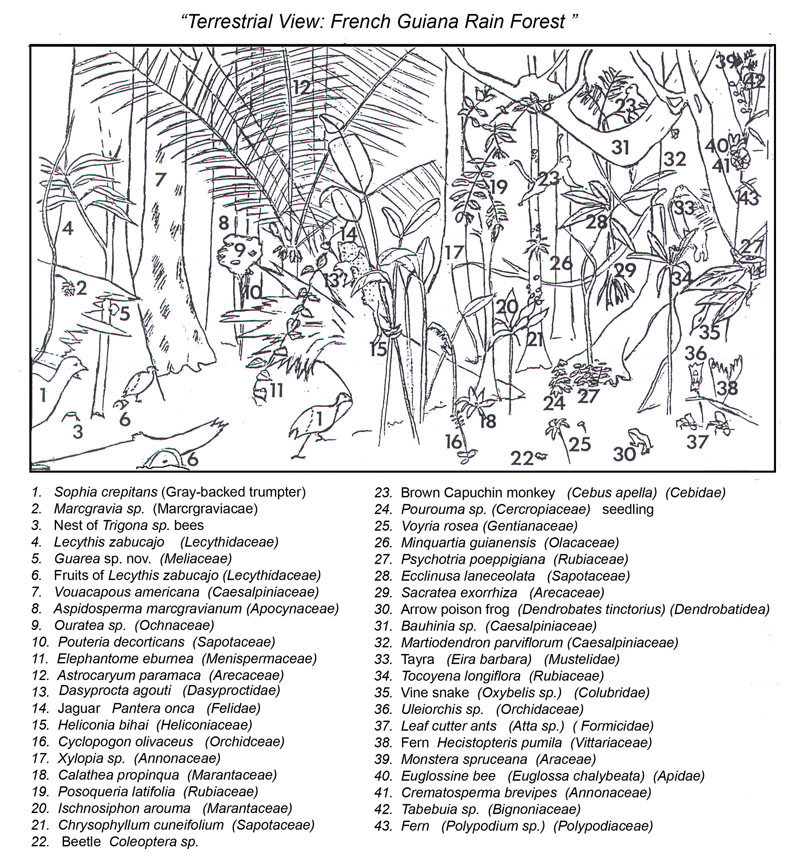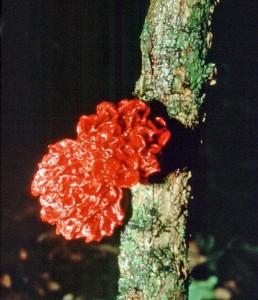Illustrating the Botanical World
Posted in Science on February 21 2013, by Scott Mori
Scott A. Mori has been studying New World rain forests for nearly 40 years. He has witnessed an unrelenting reduction in the extent of the forests he studies and, as a result, has become concerned about their future.
From December of 1995 onward, the Institute of Systematic Botany at the NYBG has periodically worked with Michael Rothman to prepare paintings representing the research of our curators. Over the next year, the curators and the paintings that represent their work will be presented in a series of essays on Plant Talk. Today, I introduce the artist and discuss his painting of the understory of a lowland rain forest in French Guiana. I chose this painting to start with because it illustrates the rich biodiversity of lowland tropical rain forest, an area where I have studied plants for many years. If you wish to see rain forest or cloud forest throughout the year without traveling, you can enjoy tropical plants and get out of the cold at the same time by visiting the Garden’s Tropical Paradise exhibition in the Enid A. Haupt Conservatory.

Botanical art and the study of plants are inseparable. In the course of my career, I have relied on Bobbi Angell for the preparation of the line art accompanying my species descriptions of the Brazil nut family, as well as those depicted in the Guide to the Vascular Plants of Central French Guiana, and the Flowering Plants of the Neotropics. In all, Bobbi has prepared a total of 600 illustrations for me. This collection joins the work of Carol Gracie, who has contributed several thousand photographs of tropical plants for my studies, many of which were never photographed; and Michael Rothman, who has prepared 20 paintings to illustrate the habitats that my fellow curators and I work in.

Rothman has illustrated numerous books, including one on the ethnobotany of the Samoan archipelago, entitled Nafanua: Saving the Samoan Rain Forest by Dr. Paul A. Cox. He has also supplied the art for children’s books–for example, Inside the Amazing Amazon, Jaguar in the Rain Forest, The Mystery of Mars, At Home with the Gopher Tortoise: The Story of a Keystone Species, and Here is the Tropical Rain Forest. Michael is well known for his natural history and anthropological paintings, which in the past frequently appeared in color in the Tuesday science section of The New York Times, as well as in Natural History magazine. In addition to preparing beautiful paintings, Michael is a student of natural history, and carefully researches all of the plants and animals in his paintings; he often consults with specialists about the organisms that he paints.
Michael is currently preparing designs used by Ace Coinage, Inc., in the production of collectible medallions and accompanying paintings, with the goal of educating others about some of Earth’s most fascinating and endangered creatures. A wider sampling of Michael’s paintings can be seen at Science-Art.com.

Today’s painting is called “A Terrestrial View of a Rain Forest in Central French Guiana.” The locality of this painting is in a remote area of the French Department of Guyane Français in northeastern South America. This forest is still one of the least disturbed rain forests in the tropics. Although it would be nearly impossible to see this exact scene play out in reality, all of the animals and plants in this area occur there. As part of this project, the plants were identified to species so that the name of every one of them, except number five in the key, was known at the time of the painting.

The plant in question is the very small tree with red fruits located in the lower left-hand corner of the painting. As it turned out, this was a new species to science belonging to the mahogany family and later described by Terence D. Pennington–a botanist associated with the Royal Botanic Gardens Kew–and myself. We called the plant Guarea michel-moddei in honor of a person who facilitated many of our early botanical expeditions to central French Guiana. The other plants, as well as the animals, can be identified by consulting the accompanying key.
Click here to see other paintings prepared by Michael Rothman for the Institute of Systematic Botany.


this post is a beautiful example of the meeting of art and science. Michael’s illustrations are magnificent…is the one above essentially a composite view of the site over time? Do you think one appreciates the NYBG more having visited this spot?